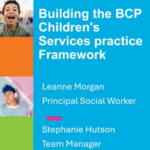Abuse of older people is more likely in residential care than in
other settings, according to an analysis of calls to charity Action
on Elder Abuse, writes Craig Kenny.
Although two thirds of the 7,000 calls analysed related to abuse
in the victim’s home, nearly a quarter of callers complained
of abuse in residential care, where less than five per cent of
older people actually live.
Several abusers were in collusion in one third of cases, and
this was most likely to happen in institutional care.
Government legislation designed to protect whistleblowers has
not been effective, the charity said.
Paid carers made almost a fifth of helpline calls, but relatives
and victims were still much more likely to sound the alarm.
The charity urged professional bodies to make failure to report
abuse a breach of their code of conduct.
One third of the abuse reported was psychological, a fifth was
financial and another fifth was physical; there was neglect in 12
per cent of cases and sexual abuse in three per cent.
Almost half of all cases included multiple abuses.
Sexual abuse was the only type of abuse where reporting rates
have increased, and the report said this may be due to abusers
seeking softer targets due to more rigorous protection of children
recently.
In 46 per cent of cases, the abuser was related to their victim
– commonly a son, daughter or partner – but relatives
working as informal carers were implicated in less than one per
cent of cases.
Paid workers were blamed in a third of calls.
Victims were most likely to be female and in their 80s. In 16
per cent of cases, the victim was over 90 years old.
The report urged the government to set up a taskforce to study
elder abuse and to launch an advertising campaign to highlight the
problem.



 Bournemouth, Christchurch and Poole
Bournemouth, Christchurch and Poole  Hampshire County Council
Hampshire County Council  Oxfordshire County Council
Oxfordshire County Council  South Gloucestershire Council
South Gloucestershire Council  Wokingham Borough Council
Wokingham Borough Council  Webinar: building a practice framework with the influence of practitioner voice
Webinar: building a practice framework with the influence of practitioner voice  ‘They don’t have to retell their story’: building long-lasting relationships with children and young people
‘They don’t have to retell their story’: building long-lasting relationships with children and young people  Podcast: returning to social work after becoming a first-time parent
Podcast: returning to social work after becoming a first-time parent  How managers are inspiring social workers to progress in their careers
How managers are inspiring social workers to progress in their careers  Workforce Insights – showcasing a selection of the sector’s top recruiters
Workforce Insights – showcasing a selection of the sector’s top recruiters  Unlocking independence: how ASDAN gives care leavers choice and control over their future
Unlocking independence: how ASDAN gives care leavers choice and control over their future 

 Facebook
Facebook X
X LinkedIn
LinkedIn Instagram
Instagram
Comments are closed.